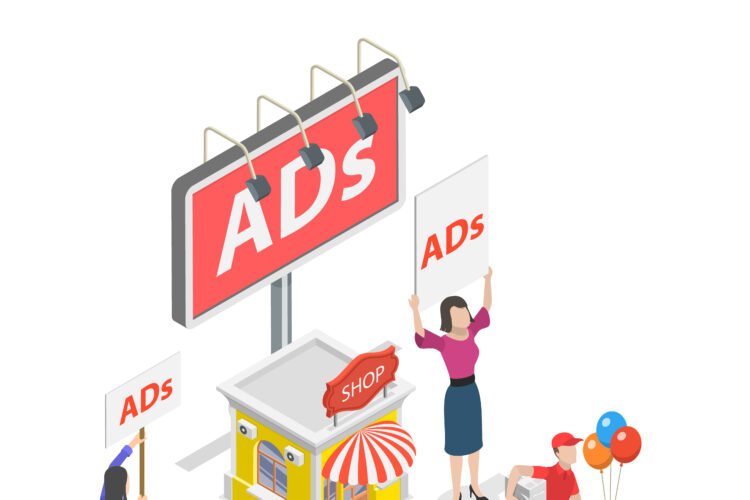
Traditional Outdoor Advertising: A Timeless Classic
Traditional outdoor advertising, also known as out-of-home (OOH) advertising, has been used by brands for decades. This form includes static billboards, posters, bus wraps, and other non-digital displays that are positioned in public spaces like highways, shopping centers, and public transport stations.
Pros of Traditional Outdoor Advertising
- Wide Reach Traditional billboards and posters in high-traffic areas offer massive exposure. Whether you’re targeting drivers on a busy highway or pedestrians in an urban area, traditional ads can be seen by thousands of people every day.
- Long Exposure Time Traditional outdoor ads stay in place for extended periods, providing long-term exposure. A billboard in a prime location can be visible for weeks or months, ensuring consistent brand recall among the audience.
- Cost-Effective for Long Campaigns Once a traditional outdoor ad is set up, there are minimal recurring costs. This makes it a cost-effective option for brands running long-term campaigns or looking for constant exposure without frequent changes.
- Simplicity and Impact Traditional outdoor ads often rely on bold visuals and concise messages. Their simplicity can be highly impactful, especially when placed in prominent locations.
Cons of Traditional Outdoor Advertising
- Limited Flexibility Traditional outdoor ads are static, which means you cannot change the content once it’s installed. This lack of flexibility makes it harder to adapt to new promotions, trends, or real-time events.
- Higher Upfront Costs While traditional ads are cost-effective in the long run, the initial costs of design, printing, and installation can be higher than digital formats.
- Limited Engagement Traditional outdoor ads are one-way communications. They don’t offer any interactive or engaging elements that allow audiences to interact with the brand or learn more instantly.
Digital Outdoor Advertising: The Future of Outdoor Marketing
Digital outdoor advertising has gained popularity in recent years due to its dynamic and interactive nature. This form includes LED billboards, digital screens in malls, and interactive kiosks in public spaces.
Pros of Digital Outdoor Advertising
- Dynamic Content Digital ads allow for multiple messages, visuals, and even videos to be displayed on the same screen. Brands can rotate different ads throughout the day, showcasing various products, promotions, or messages in real-time.
- Flexibility and Real-Time Updates One of the biggest advantages of digital outdoor advertising is the ability to change or update content at any time. This flexibility allows businesses to respond to current events, promotions, or trends quickly, keeping their ads relevant and timely.
- Engagement and Interaction Digital displays can offer interactive elements like QR codes, touch screens, or even augmented reality (AR) features. This interactivity boosts audience engagement and provides instant access to more information, enhancing the customer experience.
- Targeted Messaging Digital outdoor advertising can be programmed to display specific messages based on the time of day, weather, or even audience demographics. This targeted approach ensures that your brand reaches the right people with the right message at the right time.
Cons of Digital Outdoor Advertising
- Higher Costs Digital advertising, especially with advanced features like video and interaction, can come with higher costs than traditional methods. This includes higher media buying rates, content production, and ongoing maintenance.
- Limited Locations While digital screens are becoming more common, they are still limited to certain locations, primarily in urban areas. This could limit your reach if you’re targeting audiences in rural or suburban regions.
- Shorter Attention Spans The fast-paced nature of digital ads means that consumers might only glance at your ad for a few seconds before moving on. This requires highly impactful and concise messaging to capture their attention quickly.

Which is Right for Your Brand?
When deciding between traditional and digital outdoor advertising, it’s essential to consider the following factors:
1. Budget
If your budget is limited and you’re looking for long-term visibility in a single location, traditional outdoor advertising may be a more cost-effective option. However, if you have a flexible budget and want to experiment with dynamic content, digital outdoor advertising offers greater creative freedom.
2. Campaign Goals
If your campaign requires frequent updates, real-time promotions, or multiple messages, digital advertising is the better choice due to its flexibility. Traditional outdoor ads are ideal for campaigns focused on long-term brand building, where consistency is key.
3. Audience and Location
Consider where your target audience spends most of their time. If you’re targeting urban areas with high footfall, digital screens may provide more engagement opportunities. On the other hand, if you’re focusing on reaching commuters or rural populations, traditional billboards and posters might be more effective.
4. Message Complexity
For simpler brand awareness campaigns that rely on strong visuals and minimal text, traditional outdoor advertising can be highly effective. If your campaign involves more complex messages, videos, or interactive features, digital ads provide a better platform for communication.
How Braion Can Help
At Braion, we specialize in both traditional and digital outdoor advertising, helping brands choose the best format to achieve their goals. Our 360° media solutions include strategic planning, creative design, and targeted placements that ensure your brand’s message reaches the right audience.
Whether you’re launching a long-term brand awareness campaign or need dynamic, real-time promotions, Braion offers customized solutions tailored to your business needs. With our expertise, we help brands maximize the impact of their outdoor advertising efforts, ensuring that your campaigns deliver measurable results.
Conclusion
Both digital and traditional outdoor advertising have their strengths, and the right choice depends on your brand’s objectives, target audience, and budget. While traditional ads provide consistency and long-term visibility, digital outdoor ads offer flexibility, engagement, and dynamic content. In many cases, a combination of both can provide the best of both worlds, ensuring your brand gets the visibility and impact it needs.



